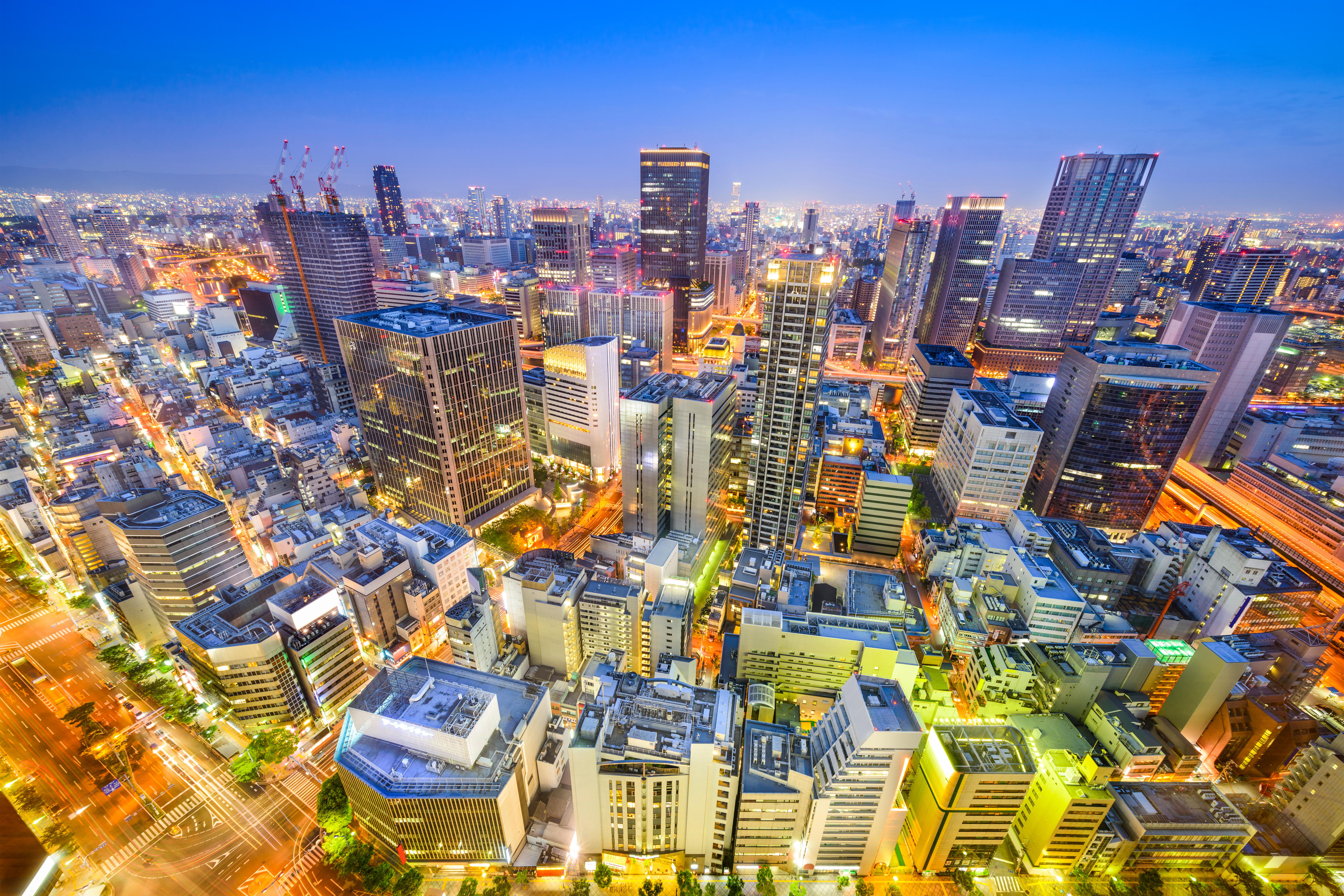Osaka << oh SAH kuh >> (pop. 2,752,412) is the third largest city in Japan. Only Tokyo and Yokohama have more people. Osaka, an important industrial and commercial center, lies on Osaka Bay on the southern coast of Honshu Island.

Osaka covers about 80 square miles (206 square kilometers). It is sometimes called the “Venice of Japan” because of its many canals and rivers. Since the 1960’s, some of these waterways have been filled and highways built over them. Downtown Osaka lies on the delta of the Yodo River. Office buildings, stores, hotels, restaurants, and entertainment centers fill this section of the city. Many shopping centers have been built underground because of a shortage of land.
Osaka has many museums, theaters, and religious shrines. Osaka Castle, built in 1584, houses a museum with historical exhibits. The National Bunraku Theater presents traditional Japanese puppet shows as well as a variety of other types of performances. Osaka has several universities, including government-supported Osaka University. In 1970, Osaka was the site of Expo ’70, the first world’s fair to be held in Asia.

In the past, most Osakans lived in small wooden houses. Today, many Osaka residents live in large apartment buildings. The city’s population increased by more than a million during the 1950’s, and this rapid growth led to shortages of land and housing. Many Osakans have moved to the suburbs to escape the city’s crowded conditions, high prices, and pollution.

Osaka is famous for its good food, especially seafood. Local specialties include eel; shrimp; turtle; and kaminabe, a fish stew cooked in a paper pot.
Osaka is one of Japan’s manufacturing centers. The city exports clothing, electrical appliances, and fabrics. The city is also a financial and trade center.
Osaka has serious traffic problems in spite of efforts to improve public transportation. Buses, a subway system, and commuter trains serve the city. High-speed trains travel between Osaka and Tokyo, a distance of about 250 miles (400 kilometers). Osaka has two airports, Kansai International Airport and Osaka Airport. Kansai International is one of the busiest airports in Asia.

Osaka was settled in ancient times. It later became Japan’s major port and commercial center. Toyotomi Hideyoshi, the ruler of Japan from 1585 to 1598, encouraged merchants to move to Osaka. The government opened Osaka’s port to foreign trade in 1868.
Allied bombing raids destroyed much of Osaka during World War II (1939-1945). The people rebuilt their city after the war. Osaka’s population growth created a need for more housing, sewers, highways, and subways. Many of these improvements were completed during the city’s preparations for Expo ’70.
See also Panasonic Corporation.
